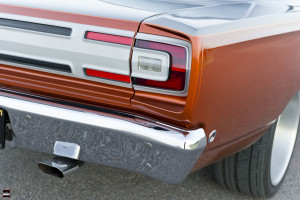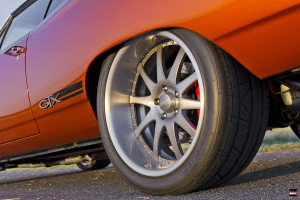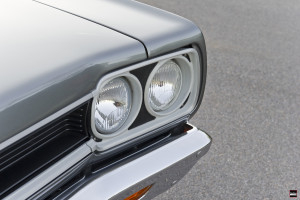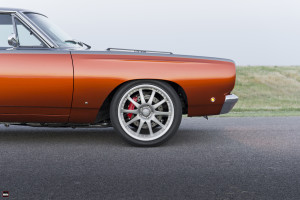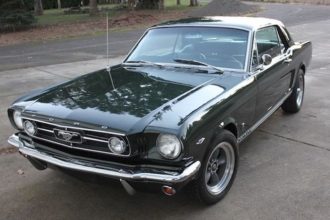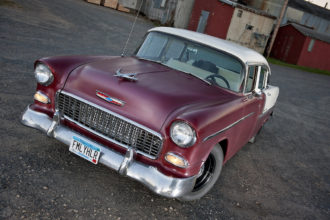photos by: Grant Cox
A GTX Owner Takes a Modern Approach to the Classic Mopar Recipe
Mopar owners are a unique breed; and certainly one of the most dedicated and brand loyal group of car guys out there, as their love for the American Penastar is second to none. Take the owner of this ’68 GTX, Leonard Wilson, for instance. His passion for these Plymouth B-bodies goes back a few decades, to the time of his very first one, a green on green ’68 GTX hardtop.
Having owned a number of GTXs over the years, including a ’68 and a ’69 convertible, Leonard was ready for another hardtop as a nod to his first car. He incorporated the help of his buddy, Rick Shironaka, for assistance on the build, as the two searched for a replacement car to the one he had to let go so many years ago.

They sat down, and formulated a plan; originally wanting to perform a simple restoration albeit with a few modern tidbits – upgraded brakes, wheels, tires, suspension, etc. But as one thing led to another, the two ultimately decided upon a complete resto-mod build!
The idea actually makes perfect sense if you think about it, because the GTX was essentially a higher-end version of the Road Runner – packed with the hard-hitting drivetrain you’d expect from a Mopar muscle car, but with a touch off class, sophistication and modern convenience. It was regarded as “the gentleman’s muscle car,” and that’s exactly what Leonard had in mind for his GTX. Green on green is a great and timeless color combination, but if they were going to modernize the car, the factory treatment had to go.
What Rick and Leonard ended up doing, was completely changing the color of the car altogether; and replacing it with a two-tone BASF/Foose Designs Pacific Sunset Orange and Mineral Grey Metallic over all-steel body panels. Leonard and Rick sourced AMD steel body panels for the front fenders, roof skin, floor pans and right side quarter panel. Rick hung, aligned and welded the panels and shot the two-tone hue over the Mopar, using his own methods of prep. The look, though obviously custom to the Mopar expert, somehow looks right at home on the old Plymouth.
Out back, the taillight treatment on the GTX is something else entirely; combining the factory display with a 21st century touch. Not wanting to change the timeless lines of a ’68 GTX too drastically, Leonard and Rick left the mirrors, door handles, side markers, and all of the factory style trim in place – no shaved bodywork here! Even reproduction OE “GTX” callouts are in place.
The intermediate Plymouth sits on Rushforth Rated-X rollers, sized in 19×8 in the front and 20×10 in the rear – wrapped in Nitto Invo rubber at all four corners. Though some of you may scoff at the wheel diameter, there’s a very good reason for those massive rollers as they house massive Wilwood SL6 and Supernate 4R brakes in the rear.
Now, under the hood, where you would find a 383, 440 or perhaps the very desirable 426 HEMI, lies a 6.1L New-Gen HEMI – sourced from a 2007 Charger SRT8. While it doesn’t have the same cubic capacity of its 1960s forebears, it does produce 425 horsepower – or enough to keep a smile on Leonard’s face and provide him with the automotive bliss that he’s looking for.
Despite it being mechanically stock, there have been a few bolt-ons thrown its way; including TTI 1-3/4 long-tube headers, Walker Turbo mufflers and dual 2.5-inch tubing running all the way back. The engine electronics, harnesses and ECM were all sourced form B&G Performance. Sitting behind the modern HEMI is a 5-speed 545 RFE automatic transmission.
Leonard admits, he originally wanted to install a 6-speed manual, but looking ahead, the long-term goal was to hang onto this one until he basically couldn’t climb behind the wheel any longer. If pushing a clutch in is too much to bear, then what’s the point? All five forward gears send the engine’s power to the Chrysler 8.75-inch rearend, stuffed with Richmond 3.55 gears.
What gets us excited is the upgraded suspension that sits under this Plymouth, because Leonard had ditched the factory hardware and implement components from QA1 and RMS, as the GTX relies on coilers from the former and the Alterktion and Street-Lynx kits from the latter. The end result is a ’60s era muscle car that can stop, corner and grip better than any engineer could have possibly imagined in 1968.
Now imagine having all of that impressive hardware under your right foot and in the palm of your hand. Because the interior of Leonard’s GTX is just as impressive as the exterior. Inside, the cockpit is loaded with power windows, power locks, tilt steering and reshaped/reupholstered modern Charger seats. But to take things to the next level, the GTX also sports a Vintage Air A/C system, Dakota Digital gauge cluster, a ISIS Intelligent Multiplex system and a Rockford Fostgate stereo system. The Billet Specialties wheel and custom interior trim pieces bring it all home.
If Leonard’s GTX says anything about its owner, or where the muscle car hobby is going in the next century take this car into account. It maintains the classic lines of a ’68 GTX, but implements the technology often shared with the cars of today. Its not just about having a stout power plant under the hood anymore, it’s about bring balance and function to the whole package.

Rick Seitz is the owner and founder of AutoCentric Media, the parent company to Timeless MuscleCar Magazine, and has a true love and passion for all vehicles. When he isn’t tuning, testing, or competing with the magazine’s current crop of project vehicles, he’s busy tinkering and planning the next round modifications for his own cars.












